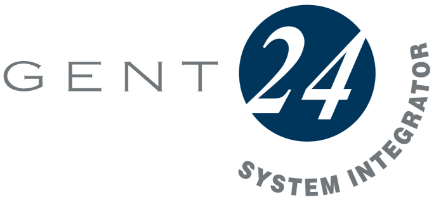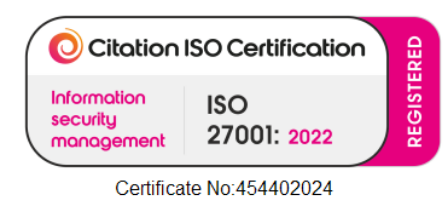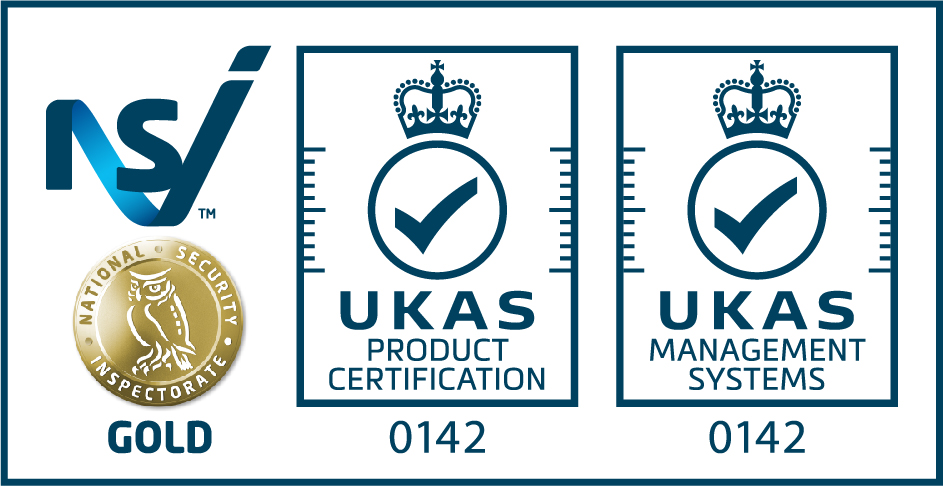Security threats are rapidly evolving, making intruder detection systems more crucial than ever in 2025. Both businesses and homeowners face increasingly sophisticated risks that demand advanced, reliable protection.
Understanding and implementing modern intruder detection systems offers real benefits. These solutions help safeguard valuable assets, protect people, and provide peace of mind in a changing world.
By exploring this guide, you will gain the knowledge needed to make informed decisions about the best security for your needs. Stay ahead of threats, ensure compliance, and embrace the latest technologies.
This article delivers a comprehensive overview of intruder detection systems for 2025. You will discover system types, essential components, integration options, compliance requirements, step-by-step selection advice, and future trends.
Understanding Intruder Detection Systems in 2025
Understanding intruder detection systems is essential for anyone looking to secure their property in 2025. As threats grow more sophisticated, these systems have evolved rapidly, offering businesses and homeowners enhanced protection and actionable insights.
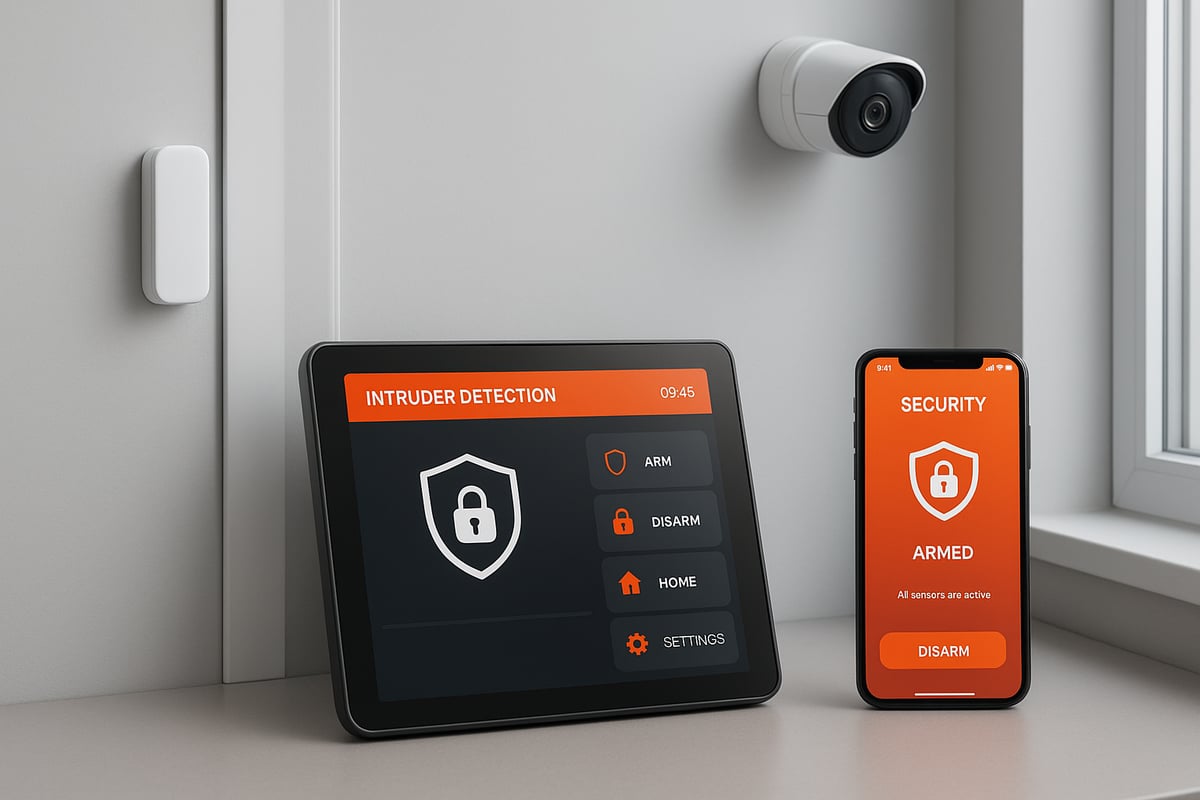
Evolution of Intruder Detection: Past to Present
Intruder detection systems have come a long way from their origins. Early models were simple bell-only alarms, alerting occupants to a breach with a loud sound. These systems offered limited information and often resulted in false alarms or delayed responses.
The digital transformation of the last decade has revolutionised intruder detection systems. Now, intelligent solutions connect seamlessly with other smart technologies, offering real-time alerts and remote management. For example, today’s systems use the Internet of Things (IoT) to link sensors, cameras, and control panels for greater coverage and reliability.
In 2023, the UK saw a 15% increase in smart alarm installations, highlighting the shift towards integrated, data-driven security. According to Intruder Detection Systems Market Analysis, this trend is set to continue, with actionable intelligence becoming a standard feature. Modern intruder detection systems now do more than raise an alarm—they provide users with the information needed to make quick, informed decisions.
Types of Intruder Detection Systems
Choosing the right intruder detection systems means understanding the available types. Wired systems offer reliability and are often preferred for large commercial sites, but installation can be invasive. Wireless systems, now accounting for over 60% of new UK installations, are quicker to fit and offer flexibility for homes and small businesses.
Monitored solutions provide continuous support, connecting to remote response centres for immediate action. Unmonitored systems notify only the property owner, which may be sufficient for low-risk environments. Hybrid systems combine the strengths of both wired and wireless technologies, allowing for scalable solutions tailored to complex needs.
| System Type | Pros | Cons | Best For |
|---|---|---|---|
| Wired | Stable, less interference | Disruptive installation | Large businesses |
| Wireless | Easy to install, flexible | Battery maintenance needed | Homes, small offices |
| Hybrid | Scalable, customisable | Higher initial cost | Multi-site environments |
Scalability and adaptability are crucial, ensuring intruder detection systems can grow alongside changing security needs.
Core Technologies Shaping 2025
The technology behind intruder detection systems is advancing rapidly. Artificial intelligence (AI) now plays a vital role, analysing data from sensors and cameras to distinguish real threats from everyday activity. This significantly reduces false alarms, as AI can tell the difference between a pet and an intruder.
Integration with smart home and building automation is another key trend. Users can control intruder detection systems alongside lighting, heating, and access control, all from a single dashboard. Cloud-based monitoring and remote access mean users can check their property’s status and receive instant notifications from anywhere.
Advanced sensors—such as motion detectors, glass break, and vibration sensors—provide multiple layers of security. Facial and behavioural recognition technologies are becoming more common, enhancing identification accuracy. With so many devices now connected, cybersecurity is a top priority, ensuring intruder detection systems are protected against hacking and data breaches.
Key Components and Features of Modern Intruder Detection Systems
Modern intruder detection systems are built on a foundation of robust hardware, intuitive software, and cutting-edge features designed for today’s complex security landscape. Understanding these components is crucial for selecting a system that delivers reliable protection and meets evolving needs.
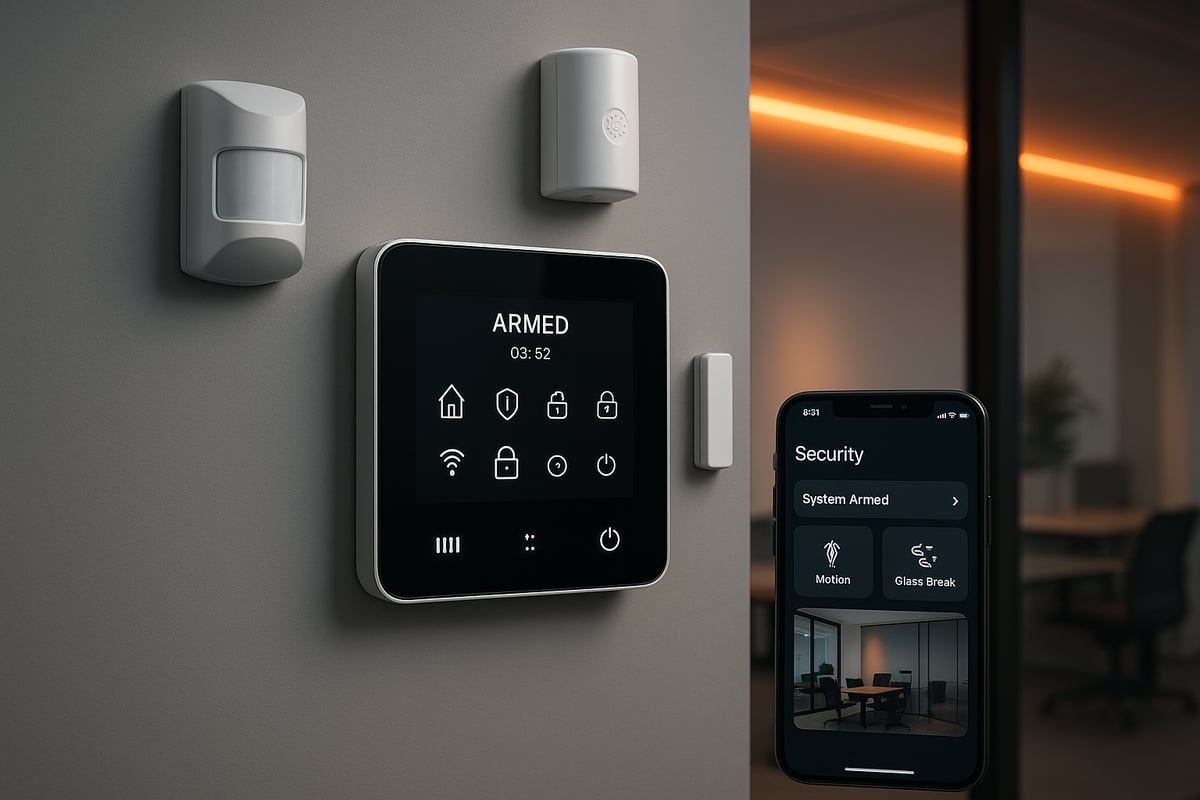
Essential Hardware Elements
The backbone of intruder detection systems lies in their hardware. At the centre is the control panel, acting as the command hub, managing signals from all connected devices.
Key hardware components include:
- Sensors: Motion detectors, door and window contacts, and glass break sensors monitor for unauthorised entry.
- Sirens and alarms: Both audible and visual, these act as immediate deterrents and alert occupants.
- Communication modules: Options include GSM, IP, and PSTN, ensuring alerts are transmitted even if one channel fails.
- Backup power supplies: Provide continued operation during mains outages, essential for uninterrupted protection.
Many modern intruder detection systems employ dual-technology sensors, combining infrared and microwave detection. This approach reduces false alarms by ensuring multiple criteria must be met before triggering an alert.
Software and User Interface
The software powering intruder detection systems has evolved to prioritise usability and flexibility. Remote monitoring via mobile apps is now standard, allowing users to check system status and receive alerts from anywhere.
Key features include:
- User-friendly dashboards: Simplify system management and event review.
- Customisable alerts: Users can set notification preferences for different types of incidents.
- Multi-user access: Grant permissions to family or team members, enhancing control.
- Mobile integration: Over 70% of users now prefer systems with smartphone control, reflecting the demand for real-time access.
A well-designed interface ensures that users can respond quickly to incidents and make adjustments to their intruder detection systems with ease.
Advanced Features for 2025
Intruder detection systems in 2025 are defined by intelligent features that go far beyond basic alerts. Artificial intelligence now enables threat assessment and automates responses, distinguishing between genuine intrusions and harmless activity.
Innovations include:
- Video verification and real-time surveillance: Instantly confirm incidents, reducing false alarms and improving response accuracy.
- Integration with access control and fire safety: These systems can work seamlessly with access control systems for business, creating a unified security environment.
- Cloud storage: Securely archives event logs and video footage for future reference.
- Self-diagnosis and predictive maintenance: Systems can automatically detect faults and schedule maintenance before issues arise.
- Automated police notification: Upon verified intrusion, the system can alert authorities without user intervention.
By combining these advanced capabilities, intruder detection systems offer proactive protection, ensuring assets and people are safeguarded around the clock.
Integration and Connectivity: Building a Unified Security Ecosystem
In 2025, integration and connectivity are transforming how intruder detection systems protect businesses and homes. By connecting security devices and platforms, organisations achieve greater visibility, efficiency, and control. This unified approach is essential for responding swiftly to threats and adapting to modern security challenges.
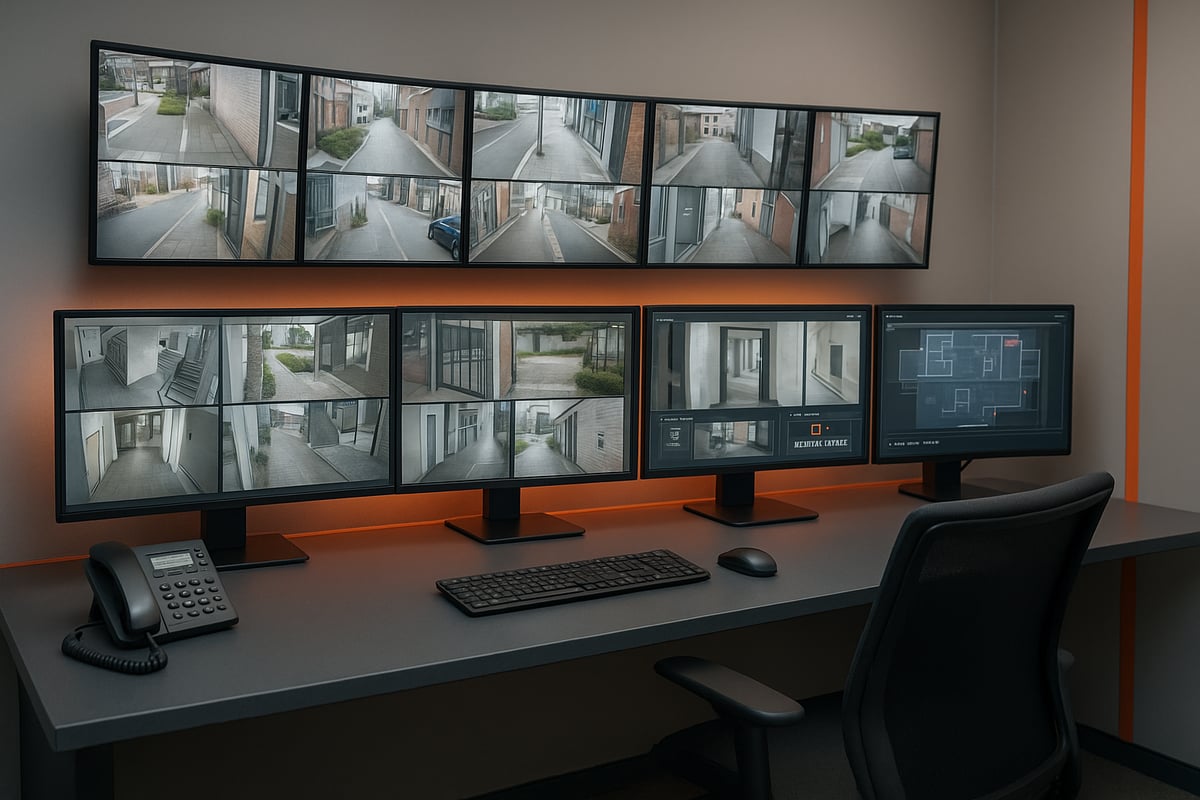
The Importance of System Integration
Integrating intruder detection systems with CCTV, access control, and fire alarms creates a comprehensive security ecosystem. Rather than relying on isolated devices, businesses benefit from a unified dashboard that delivers real-time alerts and streamlined incident management.
For example, when an alarm is triggered, connected CCTV can provide immediate visual verification, while access control systems can automatically lock doors. This level of coordination helps reduce response times and minimises risk.
A recent survey found that 55 percent of UK businesses now choose integrated security solutions, citing improved situational awareness and operational efficiency. For multi-site operations, centralised management ensures consistent protection and makes oversight far easier.
Smart Home and IoT Compatibility
The evolution of smart technology means intruder detection systems now connect seamlessly with a wide range of devices, from smart lights to voice assistants. Homeowners and business owners can control their systems remotely, arm or disarm alarms, and automate routines for greater convenience.
For example, integrating with smart lighting allows lights to turn on automatically if a breach is detected, deterring intruders and alerting occupants. Compatibility with platforms like Alexa or Google Assistant enables voice control and personalised settings.
These systems also prioritise cybersecurity, using robust protocols to protect connected devices from unauthorised access. Flexibility and scalability are key, allowing users to add new smart features as their needs evolve.
Cloud and Remote Monitoring
Cloud technology is reshaping how intruder detection systems are monitored and managed. With cloud-based platforms, users can access live video feeds, receive instant alerts, and review event logs from anywhere, at any time.
One of the main advantages is the availability of 24/7 protection and monitoring, ensuring rapid response to any incident. Remote monitoring services provide peace of mind, with professionals ready to act if a threat is detected.
Data privacy remains a top priority, with secure transmission and storage built into every system. Cloud updates also mean software stays current, reducing vulnerabilities and supporting continuous improvement. This level of connectivity empowers both businesses and homeowners to stay one step ahead of emerging risks.
Compliance, Standards, and Legal Considerations
Understanding compliance, standards, and legal frameworks is essential for anyone deploying intruder detection systems in the UK. Adhering to the latest regulations not only safeguards property but also ensures eligibility for insurance and swift police response.
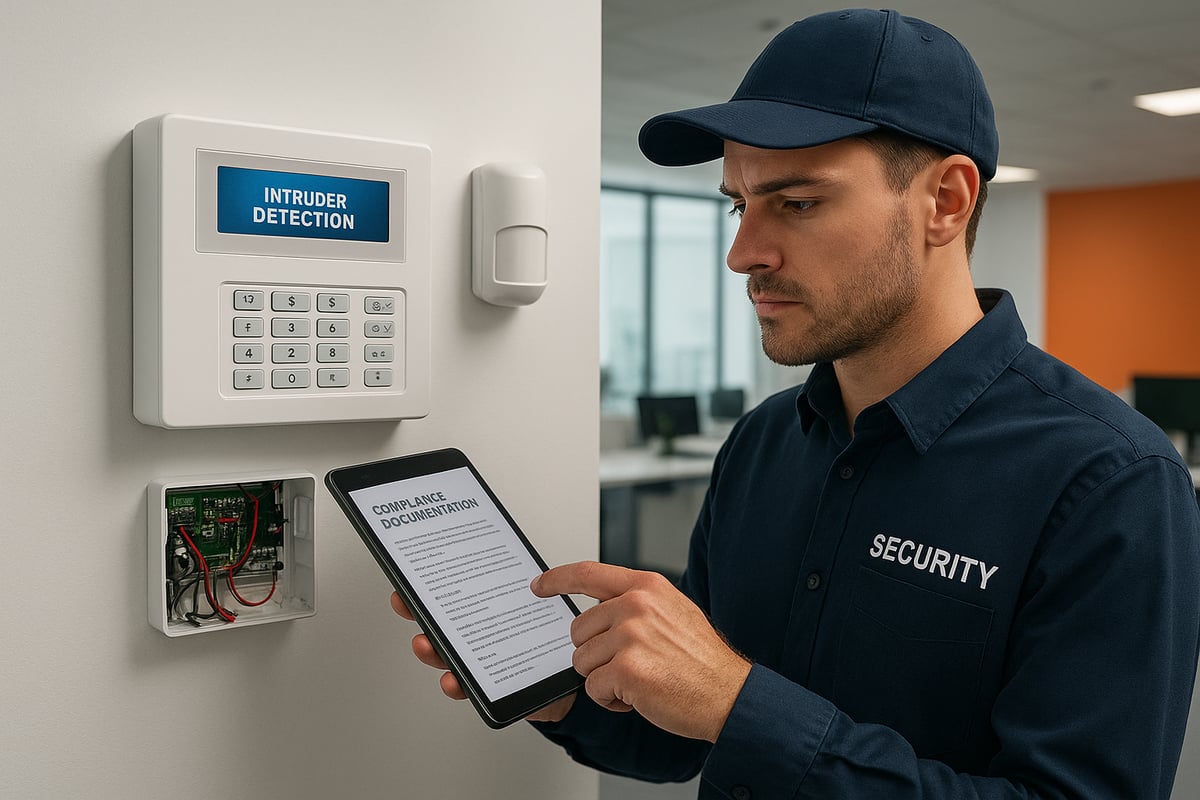
UK Regulations for Intruder Detection Systems
Intruder detection systems in the UK must comply with strict standards to maintain effectiveness and credibility. The most widely recognised benchmarks are the British Standards, including BS EN 50131 and the PD 6662 scheme. These define the technical requirements for system design, installation, and performance.
Insurance providers often mandate that intruder detection systems meet these standards. For both residential and commercial premises, insurers may require systems to be professionally installed and regularly maintained. Failure to comply can result in denied claims or higher premiums.
Police response protocols are another vital aspect. Only systems installed by accredited professionals and equipped with alarm verification features are eligible for immediate police attendance. Graded systems, ranging from Grade 1 (low risk) to Grade 4 (high risk), help match the level of protection to the assessed threat. Recent data shows that 80% of insurers insist on accredited installations, highlighting the importance of compliance for intruder detection systems.
Accreditation and Certification
Choosing certified installers is crucial for the long-term reliability of intruder detection systems. The National Security Inspectorate (NSI) and the Security Systems and Alarms Inspection Board (SSAIB) are the leading UK accreditation bodies. They ensure that providers follow best practices, from initial design to ongoing maintenance.
Data privacy is also a key consideration, especially for monitored systems. Compliance with GDPR is mandatory, safeguarding personal information collected via sensors, cameras, or monitoring centres. Remote monitoring services must hold additional certifications to guarantee operational integrity.
For organisations needing integrated fire and security solutions, BAFE accreditation is an added assurance. To learn more about industry standards and what to look for in a provider, see this Quality and accreditations overview.
Maintenance, Monitoring, and Documentation
Legal obligations extend beyond installation. Regular maintenance and system testing are critical to ensure intruder detection systems remain in peak condition. Most insurers and regulatory bodies require documented evidence of servicing and periodic inspections.
Best practice involves keeping detailed records of all maintenance visits, system upgrades, and incident logs. This documentation streamlines compliance audits and supports insurance claims in the event of a security breach.
Service contracts typically include:
- Annual or biannual system inspections
- Remote monitoring and software updates
- False alarm reduction strategies
Statistics indicate that regular maintenance can reduce false alarms by up to 50%. Ongoing support and timely interventions help maintain the reliability and effectiveness of intruder detection systems, protecting both assets and reputations.
Step-by-Step Guide to Selecting and Installing an Intruder Detection System
Selecting and installing intruder detection systems requires a structured approach to ensure security and compliance. By following these five essential steps, you can safeguard your premises effectively and avoid common pitfalls.
Step 1: Assess Security Needs and Risks
Begin by evaluating your property to identify areas most vulnerable to intrusion. Walk through the site, noting all entry points, weak spots, and high-value assets. Consider factors such as property size, location, and occupancy patterns.
Consulting with security professionals is highly recommended. They can help you recognise risks unique to your environment and advise on the best intruder detection systems for your requirements. Document your findings for future reference and to inform your system design.
Step 2: Choose the Right System Type and Features
Once risks are identified, select the type of intruder detection systems that align with your needs. Decide between wired, wireless, or hybrid solutions based on installation constraints and scalability.
List the essential features you require. This might include advanced sensors, CCTV integration, or smart automation. Ensure your chosen system supports future upgrades, and consider compatibility with other security technologies, such as access control or fire alarms.
Step 3: Ensure Compliance and Accreditation
Before installation, verify that your chosen intruder detection systems and installer meet all necessary standards. Check for accreditations such as NSI or SSAIB, which demonstrate professional competence and adherence to regulations.
Confirm that your system complies with insurance requirements and British Standards. Request documentation such as certificates of conformity and maintenance agreements. These records are vital for insurance claims and inspections.
Step 4: Professional Installation and Commissioning
Engage a certified installer to ensure your intruder detection systems are set up correctly. Professional installation guarantees reliability and minimises the risk of false alarms.
The process should include comprehensive system testing, user training, and a detailed handover. Ask your installer for a demonstration of all features. Installation should be planned to minimise disruption, especially for operational businesses.
Step 5: Ongoing Monitoring and Maintenance
After installation, set up 24 7 monitoring and rapid response protocols to maintain optimal security. Schedule regular maintenance and software updates to keep your system performing at its best.
Consider professional intruder alarm monitoring services for added peace of mind. These services provide continuous oversight and immediate response in case of an incident. Review your security needs annually and adapt your system as your risks evolve.
Future Trends in Intruder Detection Systems
Staying ahead of emerging risks requires a keen understanding of how intruder detection systems are evolving. As we move into 2025, three key trends stand out: artificial intelligence, cybersecurity enhancements, and sustainability. These factors are reshaping how businesses and homeowners secure their premises.
AI and Machine Learning Innovations
Artificial intelligence is revolutionising intruder detection systems with smarter, more adaptive solutions. Predictive analytics now enable systems to anticipate threats before they escalate, identifying unusual patterns and behaviours. Adaptive learning allows these systems to adjust to user routines, distinguishing between regular activity and genuine intrusion attempts.
AI-driven false alarm reduction is a major breakthrough. Systems can now differentiate between pets, environmental factors, and real intruders, saving valuable response resources. For instance, advanced video analytics will verify incidents in real time, filtering out non-threats with impressive accuracy.
According to the UK Intrusion Detection System Market Forecast, the adoption of AI-driven solutions is expected to accelerate, driving market growth and innovation across the sector.
Enhanced Cybersecurity Measures
With intruder detection systems increasingly connected to the internet and other smart devices, cybersecurity is a top priority. Protecting these systems from hacking attempts and data breaches is essential to maintain trust and reliability.
Modern systems employ end-to-end encryption and secure data transmission protocols to guard sensitive information. Regular vulnerability testing and timely updates further reduce the risk of cyber attacks. In 2024, there was a 30 percent increase in cyber attacks targeting smart security devices, highlighting the need for robust defences.
By integrating cybersecurity best practices at every level, organisations can ensure their intruder detection systems remain resilient against evolving digital threats.
Sustainability and Green Security Solutions
Environmental responsibility is shaping the design and deployment of intruder detection systems in 2025. Manufacturers are prioritising energy-efficient sensors and devices to minimise power consumption without sacrificing performance.
The use of recyclable materials and low-impact manufacturing processes is becoming standard. Solar-powered and battery-optimised solutions are gaining popularity, especially for green buildings and off-grid installations. Eco-friendly alarm systems offer reliable security while supporting sustainability goals.
These advancements help reduce the ecological footprint of intruder detection systems, making them a smarter choice for the environmentally conscious.
Having explored the essentials of intruder detection systems for 2025, you now understand how vital it is to stay ahead of evolving threats with the right technology and trusted expertise. Whether you’re safeguarding your home or business, making informed choices about your security setup can give you confidence and peace of mind. If you’d like tailored advice or want to see how these solutions could work for your property, why not take the next step? You can Get a Free Site Survey and let our experienced team help you assess your unique needs—no obligation, just practical support from industry experts.


